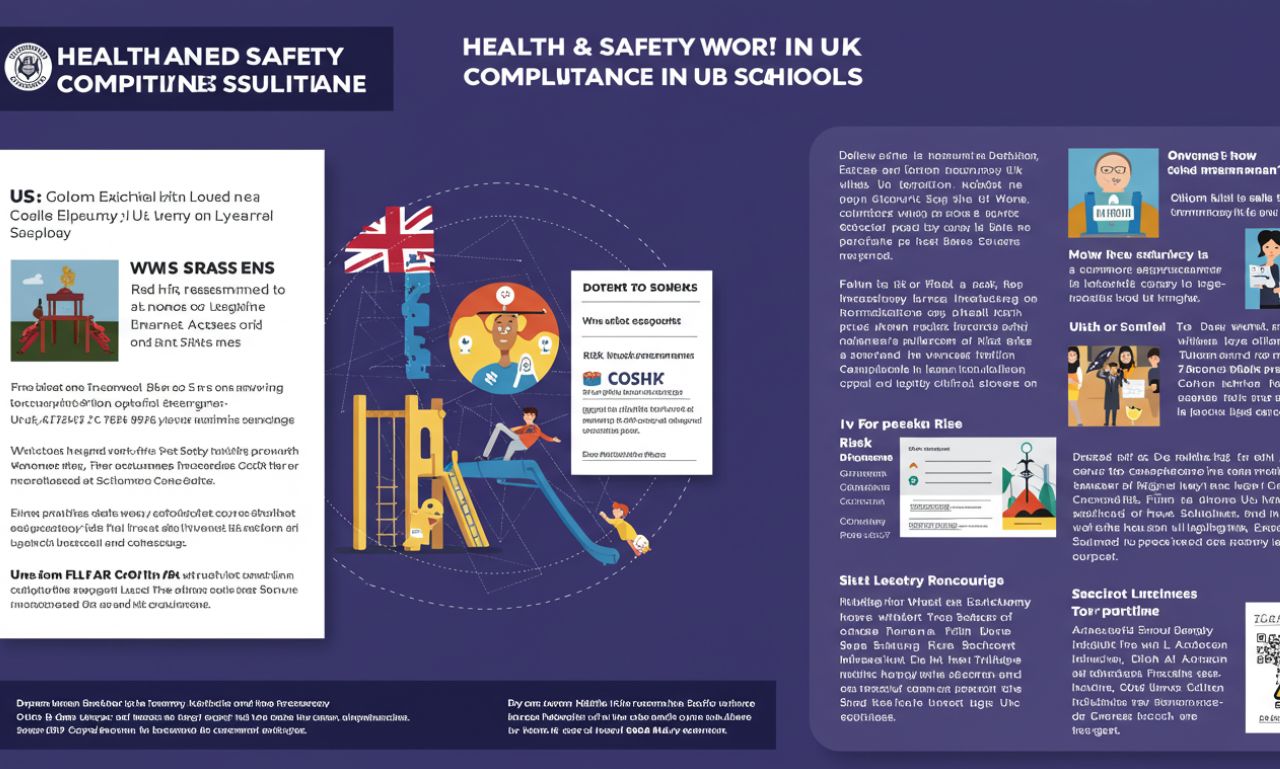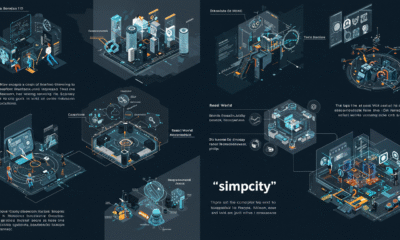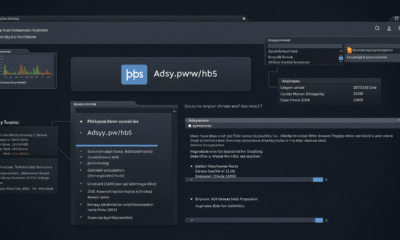Education
Join My Quiz.com – The Ultimate Platform for Interactive Learning and Fun

In today’s digital age, online platforms have transformed the way we learn, teach, and connect. One such engaging and interactive tool is Join My Quiz.com. This platform is designed to bring a blend of learning and entertainment by offering quizzes that are both fun and educational. Whether you are a teacher aiming to keep your students engaged, a corporate trainer seeking innovative ways to test knowledge, or simply someone who enjoys interactive competitions, Join My Quiz.com is the go-to destination.
The rise of e-learning tools has proven how gamification can motivate learners. Join My Quiz.com brings this concept to life by offering a platform where knowledge meets play.
Why Join My Quiz.com is Popular
Interactive Learning Experience
Unlike traditional classroom methods, Join My Quiz.com combines questions, answers, and live competition in real time. This makes the learning process lively and engaging. Learners feel more motivated to participate because of the fun, competitive environment.
Accessibility for Everyone
The platform is web-based, meaning participants can join from any device with an internet connection. Whether you’re using a laptop, tablet, or mobile phone, Join My Quiz.com ensures a smooth experience without the need for complex installations.
Engaging Gamification
Gamification is a powerful tool in modern education. On Join My Quiz.com, points, timers, and leaderboards are used to encourage learners to do their best. This competitive spirit adds an extra layer of excitement to regular quizzes.
Features of Join My Quiz.com
Join My Quiz.com is packed with features designed to enhance both teaching and learning experiences.
| Feature | Description |
|---|---|
| User-Friendly Interface | Simple navigation for hosts and participants, even for first-time users. |
| Customizable Quizzes | Teachers and trainers can create quizzes tailored to their subject matter. |
| Real-Time Leaderboard | Displays scores instantly, keeping participants engaged and competitive. |
| Multi-Device Compatibility | Works seamlessly across desktops, tablets, and smartphones. |
| Instant Feedback | Provides immediate results, helping learners identify strengths and weaknesses. |
These features make Join My Quiz.com more than just a quiz tool—it’s an educational companion that fits modern digital needs.
Benefits of Using Join My Quiz.com
For Teachers
Teachers often struggle with keeping students attentive in online classes. Join My Quiz.com solves this problem by making learning interactive. Students participate actively, ensuring better retention of knowledge.
For Students
Students love the competitive element. They can track their scores, compare with peers, and enjoy the process of learning. It doesn’t feel like a test—it feels like a game.
For Corporate Training
Businesses also benefit from Join My Quiz.com. Trainers can test employee knowledge in a fun way, reducing the monotony of traditional training sessions. It’s a win-win: employees learn better while enjoying the process.
How Join My Quiz.com Works
Step 1: Host Creates a Quiz
The host (teacher, trainer, or quiz master) designs a quiz using the easy-to-use interface. Quizzes can be multiple choice, true/false, or customized question types.
Step 2: Participants Join
Participants simply go to the Join My Quiz.com website, enter a unique code shared by the host, and they’re ready to play.
Step 3: Play in Real Time
As questions appear on their screens, participants respond. The leaderboard updates in real-time, adding excitement.
Step 4: Review Results
At the end of the quiz, results are displayed instantly. Hosts can analyze performance and share feedback.
Comparison with Other Platforms
When comparing Join My Quiz.com with other quiz-based platforms, its uniqueness becomes clear.
| Platform | Strength | Weakness |
|---|---|---|
| Join My Quiz.com | Interactive, easy to use, great for all ages | Still growing in popularity compared to older tools |
| Kahoot! | Widely used in schools worldwide | Can feel repetitive after frequent use |
| Quizizz | Strong educational database | Requires more customization sometimes |
| Mentimeter | Great for live polls | Limited quiz-based features |
This comparison shows how Join My Quiz com stands out by balancing simplicity, fun, and accessibility.
Why Students Love Join My Quiz.com
Students today crave interactive methods of learning. Join My Quiz com delivers exactly that by creating a classroom that feels like a game room. Instead of facing the pressure of traditional exams, students get to test their knowledge in an engaging, stress-free environment.
Teachers have noted improved participation rates and higher enthusiasm when quizzes are conducted on this platform. The combination of visuals, timers, and leaderboards makes the experience memorable.
Join My Quiz.com in Professional Settings
The platform isn’t limited to schools and universities. Corporate trainers use it for onboarding, compliance training, and team-building activities. Employees often find these sessions refreshing compared to lectures or PowerPoint-heavy meetings. The real-time feedback ensures that knowledge gaps are identified quickly.
Future of Join My Quiz.com
With the increasing adoption of online education and training tools, the future looks bright for Join My Quiz.com. As technology advances, features like AI-driven question suggestions, adaptive quizzes, and integration with learning management systems (LMS) are likely to be added.
This will make the platform not only a quiz tool but also a holistic solution for digital learning.
Tips for Getting the Best Out of Join My Quiz.com
-
Keep Quizzes Short and Engaging: Shorter quizzes maintain interest and prevent fatigue.
-
Use a Mix of Question Types: Combining multiple-choice, true/false, and open-ended questions makes the quiz dynamic.
-
Encourage Healthy Competition: Use leaderboards to motivate learners, but always emphasize learning over winning.
-
Review Results Together: Use instant feedback as a learning opportunity by discussing the correct answers.
Conclusion
Join My Quiz.com is more than just an online quiz platform—it is a revolution in the way we learn, train, and engage. By combining education with fun, it creates an environment where students, teachers, and professionals all benefit. From classrooms to corporate training rooms, it ensures interactive, meaningful, and memorable learning experiences.
As digital education continues to grow, Join My Quiz.com is set to play a major role in shaping the future of interactive learning. Whether you are a student aiming for academic excellence, a teacher trying to engage your class, or a professional seeking fun training tools, Join My Quiz com has something valuable for you.
Education
Health and Safety Executive in Schools: Essential Guidelines for Safer Learning Environments

Creating Safer Spaces for Learning
In the vibrant world of education—where curiosity drives discovery and laughter fills the corridors—safety must always come first. The Health and Safety Executive (HSE) provides the framework that protects everyone within UK schools, ensuring that every learning environment is free from foreseeable harm.
Established under the Health and Safety at Work etc. Act 1974, the HSE acts as the UK’s national regulator, setting and enforcing standards to safeguard pupils, teachers, and support staff. For school leaders, understanding HSE requirements isn’t just a legal duty—it’s a pledge to protect, build trust, and enable uninterrupted learning.
This guide explores the core principles of HSE compliance—from conducting effective risk assessments to embedding safety into everyday practice—empowering school administrators to create resilient, risk-aware, and thriving campuses.
The Role of the Health and Safety Executive in Education
The HSE serves as the UK’s independent watchdog for workplace safety, extending its oversight to the education sector through dedicated school initiatives. Unlike most workplaces, schools pose unique challenges—energetic playgrounds, busy corridors, active science labs, and maintenance work during school hours all create distinct risks.
HSE’s mission is to prevent work-related injuries, illnesses, and fatalities. To achieve this, it collaborates closely with the Department for Education, offering tailored guidance that simplifies complex regulations. The HSE’s “Sensible Leadership” campaign, for example, encourages school governors to integrate safety into the school’s ethos rather than treat it as a bureaucratic exercise.
This practical, proportionate approach has helped many institutions reduce incident rates by up to 30%, proving that safety and learning go hand in hand.
Beyond enforcement, the HSE offers free resources—including e-learning modules and downloadable checklists—making compliance achievable even for under-resourced schools. By focusing on prevention rather than punishment, the HSE ensures safety enhances, rather than hinders, the joy of education.
Defining Legal Responsibilities in Schools
Accountability lies at the heart of HSE compliance. The employer—usually the local authority for maintained schools or the proprietor for independent institutions—bears ultimate responsibility for health and safety. Under the Management of Health and Safety at Work Regulations 1999, they must develop and implement a clear policy that permeates the school culture.
Headteachers oversee daily compliance, often delegating duties to a designated “competent person” who conducts audits and monitors adherence.
Staff members are expected to cooperate, report hazards, and exercise reasonable care toward pupils—similar to a parent’s duty of care. Even volunteers and contractors fall under this responsibility framework.
Crucially, schools must consult employees through safety committees or staff forums. This collaborative approach not only builds trust but ensures policies reflect real classroom experiences. Neglecting these duties can result in enforcement actions or prosecutions, highlighting that safety is everyone’s responsibility.
Conducting Effective Risk Assessments
Risk assessment is the cornerstone of HSE’s safety strategy in schools. It’s an ongoing process of identifying hazards, evaluating potential risks, and implementing appropriate controls.
Start by walking through your premises, reviewing incident logs, and engaging staff in discussions about potential hazards. Consider who may be affected—young children, visitors, or individuals with special educational needs—and assess how best to protect them.
Apply the hierarchy of controls:
-
Eliminate hazards where possible.
-
Substitute safer alternatives.
-
Implement engineering controls.
-
Establish administrative procedures.
-
Use personal protective equipment (PPE) as a last resort.
Risk assessments should be living documents, reviewed at least annually or after any significant change or incident. For emerging challenges—such as infectious disease management—schools should integrate the latest HSE guidance. Keep records concise, focusing on actions taken rather than unnecessary paperwork.
Common Hazards in Schools
Even in safe environments, hazards exist. The most frequent include:
| Hazard | Potential Impact | HSE Mitigation Strategies |
|---|---|---|
| Slips, Trips & Falls | Fractures, head injuries (40% of school incidents) | Clear walkways, non-slip flooring, prompt spill clean-up, housekeeping checks. |
| Asbestos Exposure | Respiratory disease, cancer | Conduct asbestos surveys, maintain management plans, use licensed contractors. |
| Fire Outbreaks | Burns, smoke inhalation, evacuations | Regular fire risk assessments, alarm testing, annual drills, clear no-smoking policy. |
| Machinery Accidents | Lacerations, amputations | PUWER compliance, staff training, guarding, lockout/tagout procedures. |
| Working at Height | Fatal falls | Apply hierarchy of controls, use harnesses, training, avoid unnecessary tasks. |
| Radon Gas | Radiation sickness, cancer | Monitor levels, ensure ventilation, remediate where necessary. |
| Falling Trees | Crush injuries, fatalities | Regular inspections, arborist reports, remove decayed specimens. |
Understanding these risks helps leaders prioritize action and allocate resources effectively.
Sensible Safety Management
The HSE promotes “sensible safety”—a balanced approach that distinguishes between real and trivial risks. This philosophy debunks myths such as banning playground games or classroom experiments for fear of liability.
Schools should focus on meaningful risks, applying proportionate control measures. Low-risk environments may require simple checklists, while laboratories or workshops demand detailed protocols.
Recognize and celebrate safety successes, learn from near misses, and maintain an open culture where staff and students feel comfortable raising concerns. Sensible management keeps schools both safe and inspiring places to learn.
Training: Building Competence and Confidence
Training is vital for an effective health and safety culture. All staff should receive induction training, followed by role-specific instruction for higher-risk tasks.
HSE-endorsed e-learning courses—covering topics like manual handling, first aid, and asbestos awareness—offer flexibility for busy educators. Annual refreshers help maintain knowledge, while regulatory updates (such as COSHH revisions) ensure compliance with new standards.
Investing in training not only prevents incidents but also reduces insurance claims and legal costs, proving it’s as financially sound as it is ethical.
Lessons from Recent HSE Prosecutions
Recent cases underline the consequences of neglecting safety:
-
A local authority was fined £280,000 after a falling tree killed a six-year-old pupil.
-
A boarding school was fined £50,000 for excessive radon exposure.
-
A trust paid £16,000 after a technician lost a finger due to inadequate training.
-
A prep school faced an £80,000 fine following a ceiling collapse that injured 15 pupils.
-
A multi-academy trust paid £300,000 after a student with Pica died unsupervised.
These tragedies highlight one truth: failure to follow HSE guidance has devastating human and financial costs.
Resources and Support
The HSE provides extensive resources to help schools achieve compliance, including templates, case studies, and self-assessment tools. Local authorities and unions also offer support with audits and training.
HSE inspectors provide free, confidential advice—helping schools identify issues before they become problems. These resources make it easier for schools of all sizes to uphold the highest safety standards.
Conclusion: A Safer Future for Every School
When schools follow HSE standards, they transform potential risks into opportunities for stronger, safer learning communities. By prioritizing safety, school leaders protect not only their staff and students but also the trust placed in them by parents and the wider community.
Commit today to review your policies, strengthen your training, and refresh your risk assessments.
Because a safer school isn’t just compliant—it’s where brighter futures begin.
Education
Video Conference Tips: How to Communicate Effectively in the Digital Age

In today’s fast-paced digital workplace, online meetings are no longer optional—they are essential. Whether you’re connecting with clients across the globe, leading a remote team, or attending a virtual interview, your ability to present yourself professionally online matters more than ever. That’s why mastering effective video conference tips can set you apart, ensuring that you communicate with clarity, confidence, and impact.
This comprehensive guide explores proven strategies to enhance your virtual presence, avoid common pitfalls, and make every meeting count.
Why Video Conference Tips Matter in 2025
Virtual communication is here to stay. Hybrid and remote work models are no longer trends but standard practices for millions of professionals worldwide. Yet many people still struggle with distractions, technical hiccups, or poor engagement in video calls.
By following practical video conference tips, you can transform online interactions into productive and meaningful conversations. From improving your technical setup to mastering non-verbal cues, small adjustments can elevate your professionalism and credibility.
Preparing for Success: Setting the Stage
The foundation of any successful meeting is preparation. While in-person meetings allow for spontaneous adjustments, virtual interactions demand greater attention to detail.
Your environment speaks before you do. A cluttered background, poor lighting, or constant interruptions can distract participants and undermine your message. Instead, create a professional setting with neutral backgrounds, tidy surroundings, and minimal background noise. Position yourself in a well-lit space, preferably facing natural light, to ensure your facial expressions are visible.
Optimizing Your Technology Setup
A seamless technical setup is one of the most valuable video conference tips you can apply. Poor sound quality or pixelated visuals can quickly derail a meeting. Ensuring smooth connectivity shows respect for others’ time and maintains professionalism.
| Element | Recommended Setup | Why It Matters |
|---|---|---|
| Internet Speed | Minimum 10 Mbps upload/download | Prevents lag, buffering, and dropped calls |
| Camera | HD webcam, eye-level placement | Creates a clear and natural presence |
| Microphone | External USB mic or quality headset | Reduces background noise and improves clarity |
| Lighting | Front-facing soft light | Enhances visibility and avoids harsh shadows |
| Software Updates | Latest version of meeting platform | Prevents glitches and ensures security |
Testing your equipment before the call prevents awkward delays. Most platforms allow a quick pre-meeting test, which can help you fine-tune sound, visuals, and background filters.
Professional Presence: Body Language and Appearance
Just because you’re at home doesn’t mean professionalism should take a back seat. Dressing appropriately and practicing confident body language are crucial.
One overlooked but powerful video conference tip is maintaining eye contact. By looking into the camera instead of the screen, you simulate face-to-face interaction, making others feel seen and valued. Sit upright, keep gestures natural, and avoid fidgeting.
Appearance also influences perception. While full business attire may not always be necessary, aim for smart, neat clothing that reflects your role and the meeting context. Solid colors work better than busy patterns, as they appear cleaner on camera.
Communication Skills That Build Engagement
Strong communication is at the heart of effective virtual meetings. Speaking clearly, pacing your words, and avoiding filler sounds like “um” or “uh” can strengthen your message.
Equally important is active listening. Nod occasionally, use brief verbal affirmations, and show attentiveness through facial expressions. These small cues help replace the subtle body language signals often lost in virtual settings.
Another vital video conference tip is to pause strategically. Unlike face-to-face discussions, online platforms may have slight audio delays. Pausing ensures others have time to contribute and reduces the chance of speaking over one another.
Managing Meeting Dynamics
Facilitating smooth discussions is one of the biggest challenges in video calls. Too often, participants speak at the same time, or some remain silent throughout.
To manage dynamics effectively, set clear expectations from the start. Outline the agenda, define time limits, and encourage turn-taking. If you’re leading the call, use names when directing questions or comments to participants. This creates structure while ensuring everyone has a voice.
Encouraging interaction through polls, breakout rooms, or screen sharing can also enhance engagement. These tools break monotony and encourage collaboration, especially during longer sessions.
Avoiding Common Pitfalls
Even seasoned professionals make mistakes in video calls. Recognizing these pitfalls—and addressing them—is one of the most practical video conference tips for improving your virtual presence.
Overusing multitasking, for example, signals disinterest. Checking emails or working on other tasks while in a meeting is usually obvious to others and undermines credibility. Similarly, failing to mute yourself in group calls can result in distracting background noise.
Another mistake is speaking too close to the microphone, which can distort audio. Instead, maintain a comfortable distance and test your volume before starting.
Time Management in Virtual Meetings
Time efficiency is vital in virtual environments, where attention spans are shorter than in physical meetings. Long-winded explanations can quickly lose your audience.
A key video conference tip is to structure meetings into three phases: introduction, discussion, and conclusion. Begin by outlining objectives, then move into focused dialogue, and end with actionable takeaways. This framework not only saves time but also ensures clarity and accountability.
Scheduling shorter meetings where possible—such as 25 or 50 minutes instead of the full half or full hour—can also reduce fatigue and improve productivity.
Building Inclusivity and Connection
Virtual platforms can unintentionally exclude participants, especially if some feel less comfortable speaking up. Leaders and team members alike should foster inclusivity by inviting contributions, respecting diverse perspectives, and balancing speaking time.
Connection goes beyond words. Sharing brief personal updates at the start of a meeting or acknowledging team wins can strengthen rapport. Even small gestures of appreciation, such as thanking participants for their input, build trust and engagement.
Advanced Video Conference Tips for Professionals
For those who want to go beyond the basics, advanced strategies can enhance authority and presence. Using branded virtual backgrounds during client calls, for instance, reinforces corporate identity. Recording sessions (with consent) allows teams to revisit discussions and capture missed details.
Integrating productivity tools—like real-time document editing or project management software—streamlines workflows and keeps everyone aligned. Meanwhile, analytics from certain platforms can provide insights into participation levels, helping leaders refine future meetings.
The Future of Video Conferencing
As technology evolves, video conferencing will continue to shape professional communication. Artificial intelligence is already enhancing virtual meetings with automated transcriptions, smart noise cancellation, and real-time translation.
Staying updated with these innovations ensures that your skills remain relevant. Combining emerging tools with tried-and-true video conference tips will keep you ahead of the curve.
Conclusion: Making Every Meeting Count
Mastering effective video conference practices is more than a technical skill—it’s a professional necessity. From preparing your environment to honing communication and leveraging technology, these strategies ensure that every interaction is impactful.
The most valuable takeaway? Approach each virtual meeting as an opportunity to connect authentically. With the right video conference tips, you can project confidence, foster collaboration, and leave a lasting impression in today’s digital workplace.
Education
Latest Jobs News by NewsArena.Tech: Navigating the October 2025 Job Market

In today’s fast-changing world of work, staying informed is your greatest career advantage. The latest jobs news by NewsArena.tech highlights October 2025 as a month of uncertainty, innovation, and opportunity. With a U.S. government shutdown delaying crucial employment data and private reports revealing mixed hiring trends, both job seekers and professionals are rethinking strategies.
This article unpacks key developments—from shrinking private payrolls to rising demand in green technologies—while offering actionable career insights. Whether you’re updating your resume, exploring a career pivot, or simply trying to future-proof your role, these updates from NewsArena.tech can help you navigate today’s complex job market.
The Shadow of the Shutdown: Missing Data, Rising Concerns
October 2025 opened with a stark reminder of how fragile economic transparency can be. The U.S. government shutdown has delayed the release of September’s Bureau of Labor Statistics (BLS) jobs report, a cornerstone of policymaking and market decisions. Without these numbers, the Federal Reserve and businesses alike are operating without their usual guidance.
Early private data suggests a cooling labor market rather than a collapse. Health care hiring continues to cushion broader losses, while economists now rely on payroll processors and alternative surveys to piece together trends. For job seekers, this moment highlights an important lesson: don’t rely on a single data source.
Platforms like NewsArena.tech provide real-time updates, giving professionals a clearer picture when official reports lag. As alternative data ecosystems expand, vigilance becomes key. If you’re not already monitoring ADP reports or industry trackers, now is the time. Update your LinkedIn, build networks virtually, and align your skills with industries that can withstand volatility.
Private Payrolls in Focus: ADP’s September Snapshot
With the BLS silent, the ADP National Employment Report stepped into the spotlight. September 2025 brought sobering news: the private sector shed 32,000 jobs. Inflation, supply chain strains, and geopolitical tensions continue to weigh heavily on employers.
Still, there’s a silver lining—annual pay growth held steady at 4.5%, signaling that while opportunities may shrink, compensation remains competitive.
Breaking it down:
-
Leisure & hospitality posted small gains.
-
Manufacturing & retail saw sharper cuts, reflecting weaker consumer demand.
-
Tech showed mixed signals—software roles held firm, but administrative support jobs faced reductions.
For job seekers, this means specialization matters. Broad resumes may struggle in selective markets. Focus on high-demand niches like data analytics, cybersecurity, or compliance.
Geography also plays a role. Coastal hubs like San Francisco and New York posted sharper declines, while parts of the Midwest held steady. Fortunately, remote work—now nearly 25% of all postings—offers flexibility to target stronger regional markets.
The takeaway? Adaptability wins. Use downturns as signals to upskill or pivot laterally into more resilient fields.
Layoffs on the Rise: Decoding Trends & Next Steps
Layoffs remain one of the defining themes of 2025. Year-to-date figures point toward over one million cuts by year’s end, levels not seen since 2020. While September layoffs dropped 37% from August, planned hiring hit its lowest level in 16 years—a warning sign for Q4.
Industries hit hardest include tech (due to AI efficiencies), automakers, and media. Yet public sector hiring in infrastructure and utilities has helped soften the blow.
If you’re impacted, here’s how to rebound:
-
Review your severance – Many packages now include job search coaching or stipends.
-
Stay visible – Speak at webinars, contribute to open-source projects, or publish thought pieces.
-
Frame your layoff positively – In interviews, highlight resilience, agility, and lessons learned.
With over 52% of workers considering a job switch for better pay or work-life balance, competition is fierce. Treat your job search like a full-time role to avoid extended employment gaps.
Booming Sectors: Where Opportunities Are Flourishing
Not all sectors are slowing down. Some industries are thriving—and actively hiring. According to the World Economic Forum’s Future of Jobs Report, companies are heavily investing in AI, automation, and renewable energy.
-
Health care continues to add thousands of jobs each month.
-
Renewable energy is the breakout star—wind turbine and solar installation roles top the fastest-growing occupations list.
-
Data science & cybersecurity remain in high demand, fueled by the rise of AI and cyber threats.
Here’s a quick snapshot of the fastest-growing roles:
| Occupation | Growth (2023–2033) | Median Wage (2024) | Key Skills |
|---|---|---|---|
| Wind Turbine Technicians | 61% | $61,770 | Mechanical repair, safety |
| Solar PV Installers | 52% | $48,800 | Electrical systems |
| Nurse Practitioners | 46% | $126,260 | Patient care, diagnostics |
| Data Scientists | 36% | $108,020 | Programming, analytics |
| Info Security Analysts | 32% | $120,360 | Risk management, ethical hacking |
These fields blend high salaries, stability, and growth potential. For professionals considering a career shift, targeting one of these roles could be a game-changer.
In-Demand Skills: Building Your 2025 Toolkit
The latest jobs news by NewsArena.tech makes one thing clear: skills are currency. Employers increasingly value adaptability, creativity, and digital literacy alongside technical expertise.
Key skills for 2025 include:
-
AI literacy – Even non-technical roles now expect basic AI knowledge.
-
Sustainability expertise – From carbon accounting to green certifications, ESG knowledge is vital.
-
Communication & collaboration – With remote work rising, concise digital communication is critical.
For professionals, micro-credentials and short online certifications are often more valuable than lengthy degrees. Platforms like Coursera and LinkedIn Learning offer affordable ways to upskill quickly.
Pair this with networking—mentorship programs or professional groups can accelerate transitions and give you insider perspectives.
Expert Advice: Thriving Amid Uncertainty
Recruiters and economists in the NewsArena.tech network recommend optimistic pragmatism.
-
Quantify your value – Highlight measurable impact (e.g., “improved efficiency by 20%”).
-
Network smartly – Engage with leaders on LinkedIn or X to stay visible in your industry.
-
Leverage diversity initiatives – Many programs are boosting interview chances for underrepresented groups.
-
Embrace apprenticeships – For grads, paid training programs are replacing unpaid internships.
Above all, remember this: every disruption is also a reinvention opportunity. By staying informed, flexible, and proactive, you can not only survive but thrive in the 2025 job market.
Final Thoughts
October 2025’s jobs landscape may feel uncertain, but the opportunities are real for those who adapt. Whether you’re navigating layoffs, exploring renewable energy, or sharpening your AI skills, the latest jobs news by NewsArena.tech is here to guide you.
👉 Bookmark NewsArena.tech for daily updates, explore our career webinars, and take the next step with confidence. The future of work isn’t waiting—it’s hiring.
-

 Technology2 months ago
Technology2 months agoGaseping com: How It Simplifies Complex Gas Concepts
-

 Blog2 months ago
Blog2 months agoJememôtre: A Hidden Gem in the World of Art and Culture
-

 Blog2 months ago
Blog2 months agoHothaylost: Separating Fact from Fiction About This “Cultural” Phenomenon
-

 Technology2 months ago
Technology2 months agoSimpciry: A Modern Approach to Simplicity and Clarity
-

 Entertainment2 months ago
Entertainment2 months agoExploring Readmymanga com: Your Ultimate Guide to Online Manga Reading
-

 Technology2 months ago
Technology2 months agoadsy.pw/hb5: A Comprehensive Guide to Link Strategy and Digital Use
-

 Business2 months ago
Business2 months agoSOA OS23: Essential Guide to Demolition Certification for Italian Contractors in 2025
-

 Life Style2 months ago
Life Style2 months agoTop Cookie Recipes for Every Sweet Tooth
